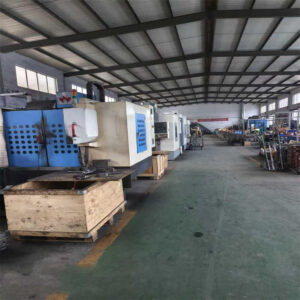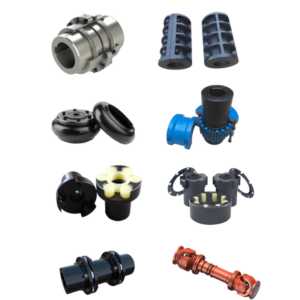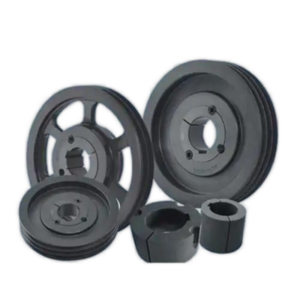When it comes to running a factory, every detail matters—especially the ones that keep your operations moving smoothly. One of the most overlooked yet critical components? The humble chain. Whether it’s powering your conveyor systems, lifting heavy loads, or ensuring seamless material handling, the right chain can make or break your factory’s productivity.
In this post, I’ll walk you through everything you need to know to boost your factory’s productivity with the right chain selection. We’ll explore why choosing the correct chain is so important, dive into the different types of industrial chains and their applications, and break down the key factors to consider when making your selection. I’ll also share practical tips on how to match the right chain to your factory’s unique needs, highlight common chain problems that can slow down operations, and provide maintenance strategies to extend the life of your chains. Plus, we’ll look at how investing in high-quality chains can reduce downtime and costs, examine the latest innovations in chain technology, and wrap up with a real-world case study showing how the right chain transformed a factory’s productivity.
By the end of this guide, you’ll have the knowledge to make informed decisions that keep your factory running at peak performance. Let’s get started!
Why the Right Chain Matters for Factory Productivity
Chains are the unsung heroes of factory operations. They play a vital role in everything from conveyor systems to lifting mechanisms, ensuring that materials and products move efficiently through your production line. Choosing the wrong chain can lead to frequent breakdowns, increased downtime, and higher maintenance costs—all of which eat into your productivity and profitability. On the other hand, the right chain can enhance efficiency, reduce operational costs, and keep your factory running smoothly.
Types of Industrial Chains and Their Applications
Not all chains are created equal. Different types of chains are designed for specific tasks, and understanding their unique applications is key to making the right choice. Here are some common types of industrial chains:
•Roller Chains: Ideal for high-speed and heavy-load applications, such as conveyor systems and machinery drives.
•Conveyor Chains: Specifically designed for material handling and transport in conveyor systems.
•Leaf Chains: Used in lifting applications due to their high tensile strength and durability.
•Silent Chains: Perfect for applications requiring smooth, quiet operation, such as precision machinery.
Choosing the right type of chain for your factory’s needs is the first step toward maximizing productivity.
Key Factors to Consider When Selecting a Chain
Selecting the right chain involves more than just picking the correct type. Here are the key factors I always consider:
•Load Capacity: Ensure the chain can handle the maximum load it will encounter.
•Material: Chains made from stainless steel, carbon steel, or other materials offer different levels of strength and corrosion resistance.
•Environment: Consider factors like temperature, moisture, and exposure to chemicals.
•Operational Speed: High-speed operations require chains designed to withstand wear and tear at faster rates.
Taking these factors into account will help you choose a chain that performs reliably under your factory’s specific conditions.
How to Match the Right Chain to Your Factory’s Needs
Matching the right chain to your factory’s needs requires a clear understanding of your operations. Start by assessing the tasks the chain will perform—whether it’s lifting, conveying, or driving machinery. Then, evaluate the load, speed, and environmental conditions. Don’t hesitate to consult with chain manufacturers or suppliers to ensure you’re making the best choice.
The Role of Chains in Conveyor Systems
Conveyor systems are the backbone of many factories, and chains are at the heart of these systems. They ensure that materials move smoothly from one stage of production to the next. Using the right chain in your conveyor system can prevent jams, reduce wear, and improve overall efficiency.
Common Chain Problems That Slow Down Factory Operations
Even the best chains can encounter issues if not properly selected or maintained. Some common problems include:
Wear and Tear: Over time, chains can stretch or wear out, leading to inefficiencies.
Misalignment: Improper installation can cause chains to run unevenly, increasing friction and wear.
Lubrication Failures: Inadequate lubrication can lead to increased friction and premature failure.
Addressing these issues proactively can save you time and money in the long run.
Maintenance Tips to Extend the Life of Your Factory Chains
Regular maintenance is essential to keep your chains in top condition. Here are some tips I swear by:
•Inspect Regularly: Check for signs of wear, corrosion, or damage.
•Lubricate Properly: Use the right lubricant for your chain type and operating conditions.
•Clean Thoroughly: Remove dirt and debris that can accelerate wear.
By following these practices, you can significantly extend the lifespan of your chains and keep your factory running smoothly.
How High-Quality Chains Reduce Downtime and Costs
Investing in high-quality chains might seem like a higher upfront cost, but it pays off in the long run. Durable chains are less likely to fail, reducing downtime and maintenance costs. They also perform more efficiently, contributing to overall productivity.
Innovations in Chain Technology for Modern Factories
The world of industrial chains is constantly evolving. Innovations like self-lubricating chains, corrosion-resistant materials, and advanced coatings are making chains more durable and efficient than ever. Staying updated on these advancements can give your factory a competitive edge.
Case Study: How the Right Chain Boosted Productivity in a Real Factory
Let’s look at a real-world example. A manufacturing plant was experiencing frequent conveyor breakdowns due to chain failures. After switching to a high-quality, corrosion-resistant chain designed for heavy loads, the plant saw a 30% reduction in downtime and a significant increase in output. This case study highlights the transformative impact of choosing the right chain.
Conclusion
The right chain is more than just a component—it’s a critical driver of your factory’s productivity. By understanding the types of chains available, considering key selection factors, and implementing proper maintenance practices, you can ensure your operations run smoothly and efficiently. Investing in the right chain today will pay dividends in the form of reduced downtime, lower costs, and improved output tomorrow.
Ready to take your factory’s productivity to the next level? Start by evaluating your current chains and making the necessary upgrades. Your bottom line will thank you.







